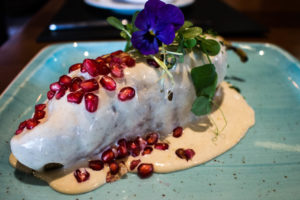In 2010 UNESCO recognized Mexican cuisine, a diverse fusion between indigenous and European diets, as an Intangible Cultural Heritage of Humanity, making it the first and only nation’s food that has been honored in such way.
But before this honor, Mexico’s application was rejected for many years, which focused only on corn as the main element of the Mexican diet since 7,000 years ago, basing the idea on the expression “Mexico is corn, corn is Mexico”. This concept is deeply ingrained in Mexican traditions: according to several creation stories, including Mayan’s Popol Vuh, humans were created by the gods from corn. Mexico broadened its application to include more basic ingredients such as beans, squash, chile and agave, and eventually earned the distinction.
Mexican dishes are as diverse as their history, due in great part to the availability or the lack of ingredients in different parts of the country. As proof of it you need only look at the different styles of regional food you find across Mexico.

Enchiladas Potosinas
Born accidentally in the neighboring municipality of Soledad de Graciano Sánchez, Enchiladas Potosinas is one of the most representative dishes in San Luis Potosí’s cuisine.
An enchilada dish consists of usually 4 or 5 fried spiced tortillas, filled with a mix of cheese and tomato sauce, served along smashed beans and guacamole. The legend of this recipe goes back to the 19th century, when Cristina Jalomo, inhabitant of the – back in the day – far town of Soledad, took her corn dough to town’s grinder, where cascabel chiles were also ground. Contaminated with chile’s color and taste, the dough took a very special flavor which conquered the palates of her family, her neighbors, and eventually, the whole city and country.

Chile en Nogada
Born in the city of Puebla, Chile en Nogada is a traditional dish served during the Mexican independence festivities. The name comes from the word Nogal, the Spanish word for walnut tree. It consists in a poblano chile traditionally served at room temperature filled with picadillo a mixture containing minced meat, fruits and spices- and topped with walnut-based cream and pomegranate seeds. It is said the chiles were prepared for the first time to please the emperor Agustín de Iturbide during his visit to Puebla after his naming as Agustín I. Some historians believe the inventors of this dish were the Augustinian nuns of the convent of Santa Mónica, who wanted to show their respects to the new emperor by using as a reference his army’s symbol, which was a flag with three colors, chile for green, nogada sauce for white, and pomegranate seeds for red. The story of its origins, added to the limited availability of its ingredients makes Chiles en Nogada one of the finest and most representative dishes of high Mexican cuisine.

Mexican Seafood
Due the massive arrival of tourists small coastal cities and their beaches have experimented during these last years, Mexican seafood dishes are now an important part of how visitors see Mexico and its culture. Almost 7,000 miles of beaches bathed by the Pacific Ocean, the Caribbean Sea, and the Gulf give Mexico a huge quantity of resources and ingredients for one of the most complex seafood cuisines of the world. Some of the most celebrated dishes in Mexican seafood are Sinaloa’s Aguachiles, raw shrimps marinated in lime juice with chiltepin chile, served with dry tortillas; Vuelve a la Vida cocktail (literally “back to life”), a mix including shrimps, oysters, octopus, tomato sauce, and lime juice; Nayarit’s Pescado Zarandeado, smoked fish, previously smeared with chile, lime and soy sauce mix; and Pulpo Atropellado, octopus cooked with butter, green pepper, and guajillo chile. With a rich heritage of both indigenous and European diets, a great variety of ingredients, and native top class chefs who take it to new levels, Mexican cuisine takes place as one of the crown jewels Mexican culture has to offer.






